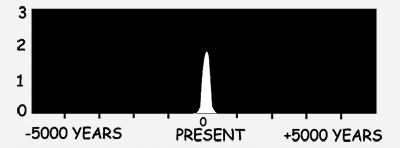Forgotten Fundamentals of the Energy Crisis - Part 10
by Prof. Al Bartlett
X. Conclusion
The preceding calculations are offered as guideposts which must be understood by those who would deal constructively with the energy crisis. The role and limitations of science in analyzing and in solving our problems was beautifully expressed by Gustav Lebon (1841-1931).
"Science has promised us truth; an understanding of such relationships as our minds can grasp. It has never promised us either peace or happiness."
Perhaps the most succinct conclusion that is indicated by the analysis above is taken from the immortal words of Pogo, "The future ain't what it used to be!" The American system of free enterprise has flourished for 200 years with spectacular achievements. Until recently it flourished in a world whose energy resources were essentially infinite. Whenever one fossil fuel came into short supply, another could always be found to take its place. We are now close enough that we can see the end of the world's total supply of fossil fuels. The challenge that we must meet is set forth clearly in the question, "Can free enterprise survive in a finite world?" President Carter observed (April 18, 1977) that: "If we fail to act soon we will face an economic, social, and political crisis that will threaten our free institutions." (See Fig. 6)

Figure 6. The delta function in the darkness. Redrawn from Hubbert's Fig. 69, Ref. 7. The epoch of the world's use of its fossil fuels is shown on a time scale of human history from 5000 yrs. ago to 5000 yrs. in the future. The vertical axis is the rate of consumption of fossil fuels measured in units of 1014 kW h / yrs. The vertical scale is a linear scale.
In order to use copyrighted material from this site for purposes of your own that go beyond 'fair use', you must obtain permission from the copyright owner.
